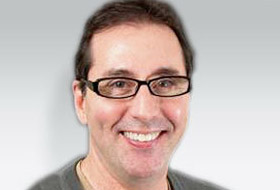INNOVATION ABOUNDS

M2MAPPS: Dave: you’re Multi-Tech’s VP of product development & innovation. What interesting M2M developments do you see coming onto the radar screen?
DAVE SMITH: How long have you got? Innovation is happening all around us, sometimes visible, sometimes not. One of the great things about M2M is the way it can create solutions that address intrinsic issues in our society and then, as a kind of encore, go on to facilitate the development of breakthrough business models. In my mind that’s meaningful innovation: something that skips over the technology and delivers tangible benefits to consumers. For example, elderly people and those with critical illnesses can employ self-diagnosis and self-care home health care solutions. That’s great: they address society’s concerns about our aging population and the escalating cost of hospitalization but there are two fundamental issues when it comes to widespread deployment. One is the cost of those solutions; the other is resistance within the medical profession. Healthcare providers are paid on results; on how many patients they treat, so why would they vote for e-health? It’s a technology that eats into their income.
M2MAPPS: So what are the new business models that are going to address that issue? The financial divide.
DAVE SMITH: There is one basic model: it’s predicated on the provision of self-diagnosis facilities and services in various locations and at the same time it generates new revenue streams for health professionals. The locations would typically be local, satellite health centers, equipped with a comprehensive range of devices and staffed by a clinician. There would be a small fee to use the facility and an additional fee for an on-line consultation if the clinician thought it advisable. However, and this variant is the one that excites me, is to have booths in pharmacies and business centers, airports as well as hotels. You’d pay for usage using a credit card as well as an eventual consultation, but consultations are not the underlying premise. The idea is to enable regular, preventative check-ups on basic health parameters and they would be regular because they could be made. This is a win:win:win scenario for society, the health care industry, and the insurance companies.
M2MAPPS: What time line do you envisage?
DAVE SMITH: Timelines are not clear but I expect early adoption to start around 2015 and widespread deployment to be in place by 2015. It would be great if we could get the health industry to commit to this concept but I expect it to come via market pull. For example, there’s a smartphone app that you can use to measure and track heart rates. The combination of high-resolution screens and powerful computing resources enable real-time measurements based on small changes in facial coloration. And researchers at the University of Washington have figured out how to use your phone to test your lung. People suffering from asthma or other chronic lung problems are typically only able to get a measure of their lung function at the doctor’s office a few times a year. More frequent testing could detect problems earlier. We are going to witness more smartphone apps; sensors are the only significant constraint. But nanotechnology is enabling the manufacture of very small sensors that can be embedded in these devices and maybe one day we’ll be able to come close to the ability of dogs to sniff out early signs of cancer. In the meantime we might see Apple putting e-health booths in their stores.
M2MAPPS: Do you have another example of M2M’s ability to address a major issue in our society? Something that excites you.
DAVE SMITH: V2X is exciting. The business case for this development is overwhelming: in the US there were over 32K fatalities in 2011. V2X identifies the Vehicle-to-Vehicle and Vehicle-to-Infrastructure components of various road safety applications such as advanced driver assistance systems. It brings them together, boosts the functionality and enables the creation of a new, holistic business model. In a nutshell, the combination of GPS and short-range wireless communications means that vehicles have their own wireless LAN and that enhances existing apps and also enables the creation of new applications. For example, drivers get awareness of traffic in adjacent lanes as well as their distance from the vehicle in front. Warning messages can be sent about a slow or stopped vehicle ahead and a potential forward collision. The position and speed of emergency vehicles such as ambulances and fire engines can be communicated to the surrounding vehicles and roadside infrastructure. When an emergency vehicle is approaching, the technology will change the traffic light at intersections. In addition vehicles can share information about their current local traffic situation and use this information to optimize their routes. This will allow cars to move at higher speeds with less space between them, which improves traffic flow and reduces emissions as vehicles spend more time moving and less time sitting in traffic.
M2MAPPS: What’s the timeline for this development?
DAVE SMITH: I don’t think we’ll see deployment of full-blown systems until 2015 and they’ll be in upmarket cars like Audi, BMW and Mercedes. That said, V2X will be a competitive differentiator and we can expect it to be an option on cars in the middle of the price range. However, standalone devices that can be retrofitted would enable earlier usage of V2X’s key features and that would kick start awareness of the many benefits. Trials are underway and Europe is in pole position. V2X is being researched by the German and French governments as well as the European Commission, mainly because of the environmental and safety benefits. But it’s also a great way to promote European technology and get and early lead in an important market.
M2MAPPS: Thank you Dave!
